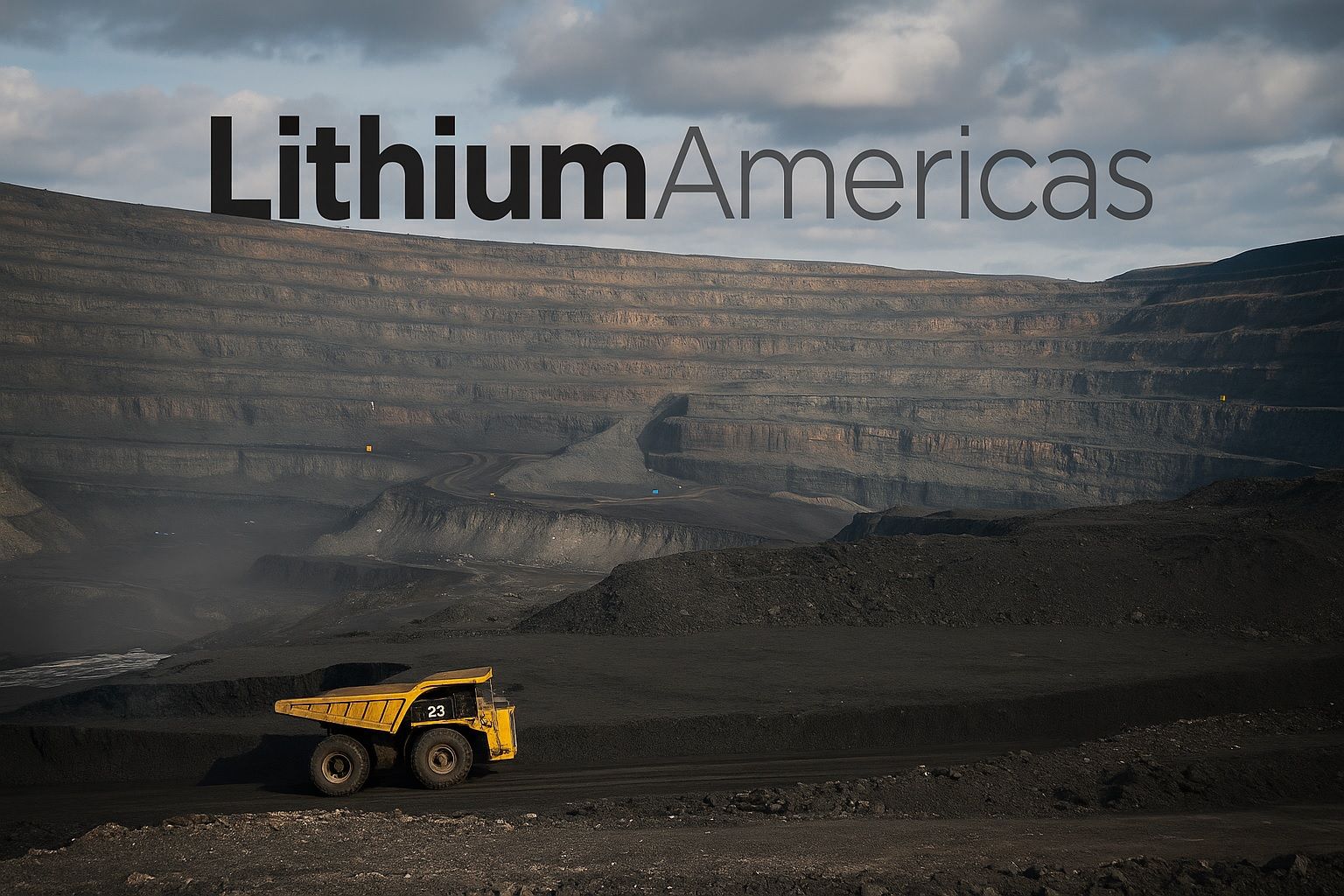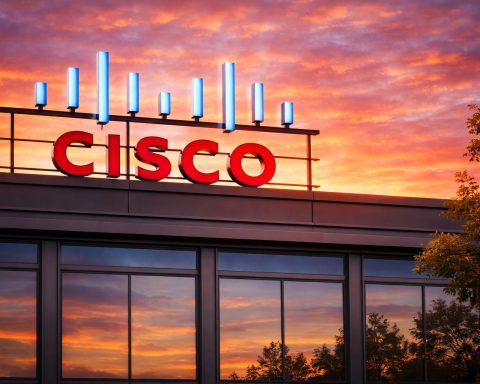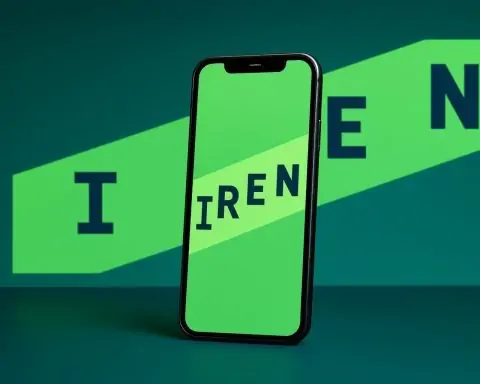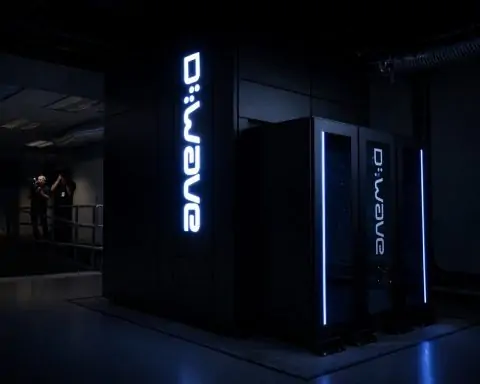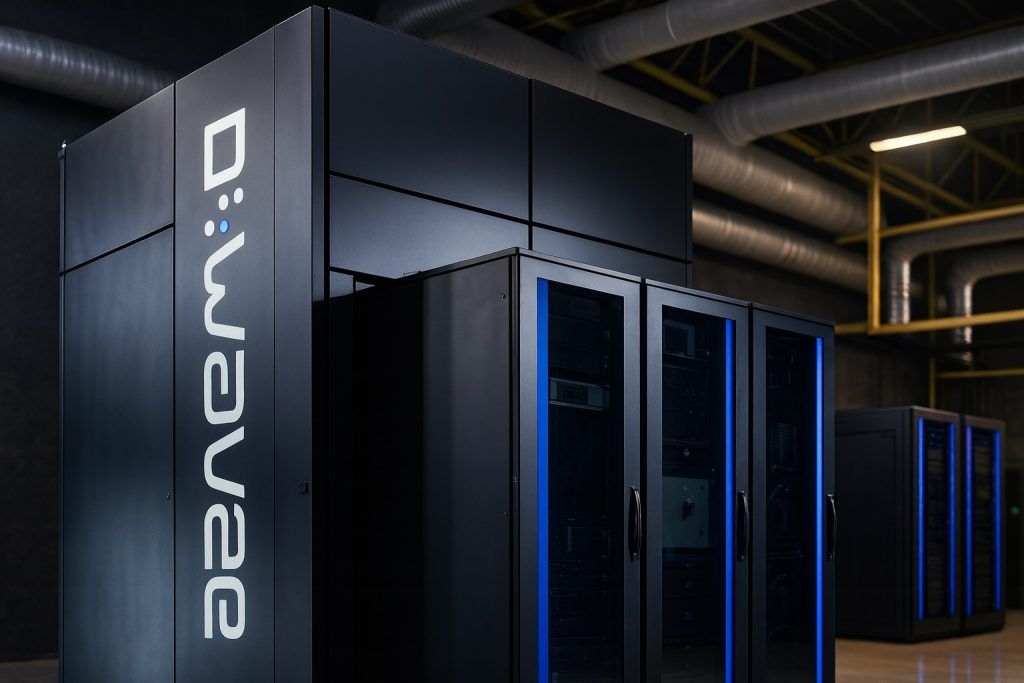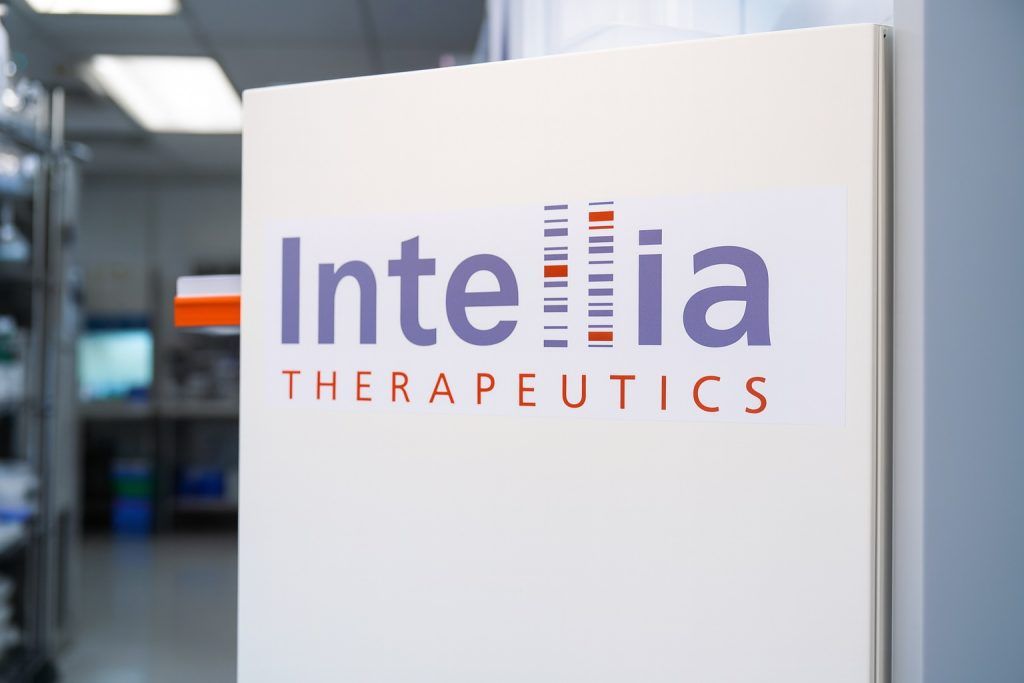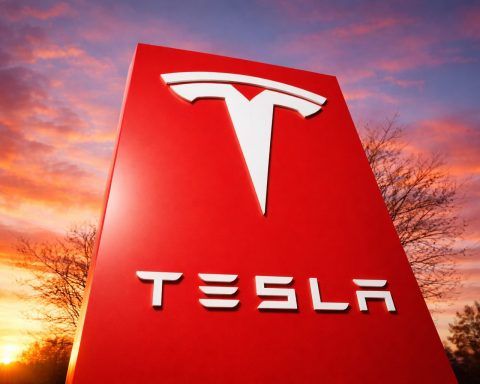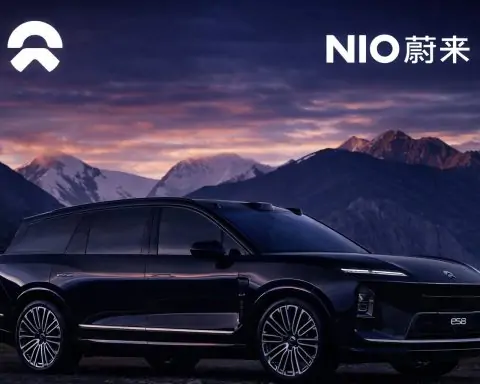- Wild 2025 Rally: Lithium Americas Corp. (NYSE: LAC) has more than doubled its share price in 2025, surging from the low-$3 range in January to recent highs around $9-$10 after major U.S. government support news [1]. Year-to-date, LAC stock was up over 200% at its peak, far outpacing the broader market.
- Recent Pullback: After closing above $10 in mid-October, LAC shares have retraced roughly one-third of their value [2]. The stock closed at $6.72 on Friday, Oct. 24 [3], and early trading on Oct. 27 saw slight declines amid profit-taking. Despite the pullback, LAC remains well above summer levels (it traded under $3 as recently as mid-2024 [4]).
- U.S. Government “White Gold” Deal: A groundbreaking deal with the U.S. Department of Energy (DOE) in late September sparked LAC’s rally. The DOE will acquire a 5% equity stake in Lithium Americas and a 5% stake in its Thacker Pass lithium mine joint venture as it finalizes a $2.2 billion low-interest loan for the project [5] [6]. This unprecedented federal backing – dubbed a “white gold” strategy for lithium – signals Washington’s commitment to domestic EV battery materials.
- $435 Million Loan Tranche Secured: Lithium Americas received an initial $435 million drawdown from the DOE loan in October [7], jumpstarting construction of processing facilities at the Thacker Pass site in Nevada. The full loan package, at ~$2.23 billion, is meant to finance Thacker Pass through production and was renegotiated to give the government its equity stake and stricter terms amid weak lithium prices [8].
- EV Boom Driving Demand: The global electric vehicle boom underpins Lithium Americas’ long-term prospects. EV sales in 2025 are projected around 20–21 million units (≈25% of new cars), up from just 3 million in 2020 [9]. Each EV battery requires lithium, and industry forecasts show lithium demand more than doubling to over 2 million tonnes by 2030, potentially leading to a supply shortfall within a few years [10] [11].
- Thacker Pass Project in Focus: Thacker Pass is one of the largest known lithium reserves in the U.S., slated to produce 40,000 tonnes of lithium carbonate per year at full capacity – enough for roughly 800,000 electric vehicles annually [12]. Construction began in 2024, and first production is targeted for 2027-28. With General Motors investing $650 million (for a 38% project stake and rights to the first 40,000 tpy of output) and holding ~9% of LAC’s equity [13], the project is fully funded through its first phase.
- Analyst Caution vs. Hype: Wall Street’s reaction is mixed. Government support de-risks the project – Jefferies called the DOE stake “a leading indicator of favorable returns” [14] and others say federal investment plus offtake guarantees “can de-risk big projects” [15]. However, many analysts warn LAC’s stock has run ahead of fundamentals. The consensus 12-month price target is only about $5–6 (roughly 40–50% below current levels) and the average rating is “Hold” [16] [17]. Several brokers downgraded LAC after the spike, citing no near-term revenues and an oversupplied lithium market keeping prices low [18].
- High Volatility Ahead: LAC has traded with very high volatility – swinging 6% or more per day on average [19] – and further swings are likely. Key upcoming events include the company’s Q3 earnings report on Nov. 6, where investors expect updates on DOE funding deployment and mine development. Market sentiment is seesawing between long-term optimism (EV-driven lithium demand, government/GM backing) and short-term concerns (execution risks, commodity price fluctuations).
LAC Stock’s Roller-Coaster Ride in Late October
Lithium Americas stock is front and center on October 27, 2025, after a roller-coaster month. The share price exploded earlier in October on news of U.S. government backing, then cooled over the past week amid broader market shifts and profit-taking. LAC closed last week at $6.72 in New York [20], rebounding nearly +3.7% on Friday alone, yet it remains well below its mid-month peak. Just two weeks ago on October 14, the stock traded above $10 (an intraday 52-week high) following a frenzied rally [21]. Since that peak, LAC has slid roughly 33% as investors lock in gains [22]. Early on Monday the 27th, the stock was trending slightly lower, suggesting continued caution after the recent volatility. Even with the pullback, Lithium Americas shares are up over 100% from January levels, a dramatic turnaround from 2024 when the stock languished under $3 amid a lithium price slump [23].
The past month’s wild swings reflect shifting sentiment around Lithium Americas’ flagship project and the lithium market overall. In late September, LAC was a little-known, pre-revenue mining developer; by early October it had a >$2 billion market capitalization and became one of the year’s hottest stocks. “The U.S. government will acquire [an equity] stake” in LAC was all it took to ignite a frenzy [24]. The stock’s surge – nearly 90% in one session on the initial news [25] – underscored how significant Washington’s backing is for a company aiming to supply the EV revolution. However, the subsequent cool-down shows the market is now trying to calibrate expectations: how much of this story is genuine long-term value versus short-term hype? Traders note that even after retreating from $10, LAC is still trading well above analysts’ fair value estimates, leaving a narrow margin for error as the company moves forward.
U.S. Government Stakes a Claim in “White Gold”
The single biggest catalyst behind Lithium Americas’ rise was the U.S. Department of Energy’s decision to take an ownership stake in the company and its Nevada project – a highly unusual move for the U.S. government. In a first-of-its-kind agreement for the mining sector, the DOE will acquire a 5% equity stake in Lithium Americas and a separate 5% stake in its Thacker Pass lithium mine joint venture (with GM) [26]. Energy Secretary Chris Wright confirmed the plan on Bloomberg TV, emphasizing it as part of Washington’s strategy to secure domestic sources of lithium (often dubbed “white gold” due to its value in batteries) [27] [28].
This equity stake was negotiated as the DOE reworked the terms of a $2.2 billion loan that it had conditionally approved for the Thacker Pass project [29]. With lithium prices slumping over the past year, there were concerns about the mine’s economics. By taking a direct stake (and thus a share of upside), the government aimed to bolster the project’s financing while protecting taxpayer interests [30] [31]. A White House official bluntly noted “there’s no such thing as free money,” indicating the stake comes with expectations that Lithium Americas meet targets and prioritize U.S. supply needs [32].
For Lithium Americas, the DOE partnership is transformative. The final loan agreement, reached in early October, included giving the DOE warrants for 5% of LAC’s common shares at a nominal $0.01 exercise price (essentially granting the 5% ownership almost for free) [33]. In exchange, the government eased the loan’s repayment terms – deferring $184 million of initial payments by five years – and promptly released the first $435 million tranche of the loan to the company [34]. “We are excited that Thacker Pass is progressing rapidly… and we are honored to have the DOE as a partner on this journey,” said Jonathan Evans, Lithium Americas’ CEO, as the funds were drawn in late October [35]. This infusion is being used to accelerate construction of lithium processing facilities at the Nevada site [36].
The federal backing was described as a “game-changer” by Wedbush Securities analysts [37], instantly boosting investor confidence that Lithium Americas can finance and complete the giant project. It’s easy to see why the market reacted so strongly: Washington is literally putting skin in the game. As Reuters noted, this bold step underscores a policy shift – using direct government ownership to steer strategic sectors and curb reliance on China’s supply chain [38]. Lithium is critical for electric vehicle batteries and energy storage, and China currently refines about 75% of the world’s lithium [39]. By investing in LAC’s mine, the U.S. is signaling it will do whatever it takes to ensure a domestic supply of this critical resource. This confidence from the highest levels of government propelled LAC’s stock into overdrive, in what some dubbed a modern-day “white gold rush.”
Thriving on EV Demand – and Navigating a Glut
The excitement around Lithium Americas comes amid a broader context: booming electric vehicle demand colliding with short-term lithium oversupply. On one hand, the long-term outlook for lithium is undeniably bullish. Global EV sales are accelerating every year – an estimated 20–21 million electric cars will be sold in 2025 (roughly 25% of all new cars), up from just 3 million in 2020 [40]. Each of those EVs requires a large lithium-ion battery pack. Analysts project that by 2030, annual lithium consumption will exceed 2 million tonnes (lithium carbonate equivalent), more than double today’s levels [41]. In fact, industry studies predict that demand may outstrip supply by later this decade, potentially flipping the current surplus into a significant lithium deficit of 700,000+ tonnes by 2030 if new mines don’t ramp up fast enough [42].
Thacker Pass could come online just in time to ride that wave. Lithium Americas aims to start production by 2027 and eventually produce 40,000 tpy (tonnes per year) of battery-grade lithium carbonate [43]. That output would make it one of North America’s largest lithium producers, at a time when U.S. battery gigafactories will be hungry for local material. “On paper, the timing looks fortuitous – they’ll be delivering lithium right when the market may swing back to shortage,” one analyst noted. If EV adoption continues at a blistering pace, new suppliers like LAC are poised to benefit from rising prices and insatiable demand.
However, lithium is a commodity, and it has gone through a boom-bust cycle recently. After an unprecedented spike in 2022 (when lithium carbonate prices topped $70,000 per tonne amid a supply squeeze), the market went into a tailspin in 2023 [44]. A flood of new supply – especially from Chinese and Australian mines – and a temporary cooling in EV sales caused lithium prices to plunge nearly 80% from their peak by early 2024 [45]. By mid-2025, prices stabilized, but at a much lower level (around ¥73,000 per ton in China, roughly $10,000/ton in dollar terms) [46]. This was a boon for battery manufacturers but a challenge for lithium miners’ economics. Lithium Americas and the DOE had to reconsider loan terms precisely because lithium prices were so weak – U.S. officials wanted to be sure the company could service its debt if the downturn persisted [47].
At present, the lithium market remains in a slight oversupply, keeping prices soft [48]. This is one reason some analysts urge caution on LAC: if prices stay low for years, even a great project can struggle financially. Morningstar analyst Seth Goldstein has argued that the government’s stake could come with mechanisms (like minimum price offtake contracts) to ensure Thacker Pass stays profitable “even if lithium prices remain lower for longer” [49]. Such guarantees, if implemented, would significantly de-risk the project’s revenues. Indeed, the DOE deal reportedly includes provisions and expectations around offtake – for example, ensuring General Motors will buy the mine’s lithium even in weak markets [50] [51]. (GM’s original agreement gives it rights to 100% of Phase 1 production for 10–20 years [52], and both GM and the government are keen to make sure that lithium finds a home in U.S. factories.)
The geopolitical aspect also looms large. China dominates lithium processing and has been known to leverage its position in critical minerals. The U.S. and its allies are determined to build out alternative supply chains – and backing a domestic project like Thacker Pass is part of that strategy [53]. “We strongly support this project… it will reduce U.S. dependence on imported lithium,” said GM executive Shilpan Amin of the Thacker Pass mine [54]. That sentiment is echoed in Washington, where bipartisan consensus (spanning the previous Biden administration and the current Trump administration in 2025) is that home-grown lithium is a national priority. This favorable policy environment is a tailwind for Lithium Americas. However, if global relations improve – for instance, if the U.S. and China reach new trade understandings – some of the urgency around domestic lithium could fade. For now, though, governments are effectively racing to secure “white gold,” whether through investment, loans, or even resource nationalism (as seen in countries like Chile, which is increasing state involvement in its lithium sector [55]).
Experts Split: Bold Opportunity or Overhyped Stock?
With LAC’s stock having swung from bust to boom in a matter of months, financial experts hold contrasting views on its prospects. On one side, optimists point to the company’s strengthened position: Lithium Americas now has the funding, partners, and permits in place to potentially become a major U.S. lithium producer. The DOE’s loan comes with an ultra-low interest rate (tied to U.S. Treasury rates, with no spread) and a 23-year term [56], minimizing the financial burden during the heavy construction period. General Motors’ investment and 10-year offtake commitment give the project a guaranteed customer and validate its strategic value [57]. And the federal government taking equity warrants is seen as a powerful vote of confidence. “Markets see such stakes as ‘a leading indicator of favorable’ returns on capital” in critical mineral projects, Jefferies analysts wrote after the news [58]. In other words, the government backing suggests Thacker Pass is not just viable but important enough to succeed. Another analyst noted that combining government investment with offtake agreements and price supports “can de-risk big projects” like this [59]. The overarching bull case is that LAC could ride the EV battery boom to become a highly profitable supplier by late this decade – effectively growing into its now-elevated valuation as revenue starts to flow.
On the other side, critics argue that the stock’s recent rally overshot reality. Lithium Americas is still pre-revenue and will not produce lithium commercially until 2027 at best. Building a mine and processing operation is a complex, multi-year endeavor fraught with execution risks. Any delay or budget overrun could hurt the stock, especially after such a rapid rise. Notably, Wall Street’s consensus rating on LAC is only “Hold”, and several analysts downgraded the stock during its ascent [60] [61]. The average 12-month price target is around $5 to $6 per share [62], roughly half the current price – indicating that many see the stock as overpriced after the DOE-induced euphoria. TD Cowen (Cowen & Co.) cut the stock to Market Perform on September 24 right when it spiked, saying that much of the good news was already baked in and reiterating a $5.00 target [63]. Scotiabank went as far as labeling LAC “Sector Underperform”, even while raising its target from $2.75 up to $5.00 post-deal [64]. Scotia’s analysts warned that today’s lithium price is a fraction of its peak and noted LAC won’t have any revenue for years [65] – a combination that makes justifying a multi-billion valuation difficult. In short, these skeptics believe the stock got ahead of itself, and they advised investors to pocket some profits from the “parabolic” move [66].
The cautious view gained some validation when insiders seemingly agreed the price was rich. In early October, Lithium Americas Vice President Alexi Zawadzki sold almost 90% of his shares (353,914 shares) at an average price of about $9.48 [67], according to SEC filings. This large insider sale (worth over $3.3 million) came near the stock’s highs and preceded part of the pullback. While insiders may sell for many reasons, the timing and scale – essentially cashing out the majority of his holdings at a multi-year peak – raised eyebrows among investors [68]. It suggests even some company executives felt it was a good moment to realize gains after the huge run-up.
Outlook: High Hopes, High Volatility
Going forward, Lithium Americas faces a pivotal test: executing on its promise to deliver the first new major U.S. lithium supply in decades. The pieces are in place – funding from DOE and GM, regulatory permits, a defined construction plan – but now management must deliver. Over the next 6–12 months, investors will be watching closely for tangible progress at Thacker Pass: completion of engineering milestones, construction of infrastructure, and staying on schedule and budget. The company’s next earnings report (due November 6, 2025) may shed light on how the DOE loan funds are being deployed and whether any new conditions are attached to future disbursements. Successful execution could gradually validate the market’s optimism, while any setbacks could reinforce the bears’ case that LAC’s valuation is stretched.
In the near term, volatility is likely to remain high. Lithium Americas’ stock has been trading in wide ranges – its average daily swing is over 6% [69], and double-digit percentage moves have not been uncommon on news days. The stock’s relatively small float (it issued ~27 million new shares this year via an ATM offering [70]) and the speculative fervor around EV-related names mean sharp moves can happen in both directions. “A single tweet or headline about EV policy, Chinese supply, or loan politics could send LAC swinging,” noted TechStock², following the stock’s recent turbulence [71]. Investors in Lithium Americas should be prepared for a bumpy ride. As one trader quipped after watching the wild swings: “If you’re still guessing at the end of your analysis, it’s probably not a trade worth taking.” [72] In other words, caution and careful position sizing are warranted.
That said, the long-term narrative remains compelling. If Lithium Americas can stay on track, by late this decade it could transform from a development-stage hopeful into a cash-generating cornerstone of the North American EV supply chain. At full production, Thacker Pass’s output would be significant on a global scale – and coming at a time when lithium might be in short supply again. The fact that both the U.S. government and a Detroit auto giant (GM) have put real money into this venture suggests there is confidence in its strategic value. “Now comes the hard part: delivering on the promise,” one industry analyst remarked after LAC’s dizzying ascent [73]. The “white gold” rush for lithium is on, and Lithium Americas has secured a prized position. The next chapters of this story will depend on execution and external market conditions in equal measure. For investors and EV watchers alike, LAC has become a stock to follow closely – a high-reward, high-risk bet on a battery-powered future.
Sources: Reuters; Lithium Americas Corp. press releases; TechStock² (TS2.Tech) analysis [74] [75]; Pulse2.0 News [76]; Investing.com; MarketBeat; TradingEconomics; Morningstar; company filings.
References
1. ts2.tech, 2. stockinvest.us, 3. www.investing.com, 4. ts2.tech, 5. ts2.tech, 6. ts2.tech, 7. pulse2.com, 8. ts2.tech, 9. ts2.tech, 10. ts2.tech, 11. ts2.tech, 12. ts2.tech, 13. ts2.tech, 14. ts2.tech, 15. ts2.tech, 16. ts2.tech, 17. ts2.tech, 18. ts2.tech, 19. stockinvest.us, 20. www.investing.com, 21. ts2.tech, 22. stockinvest.us, 23. ts2.tech, 24. ts2.tech, 25. ts2.tech, 26. ts2.tech, 27. ts2.tech, 28. ts2.tech, 29. ts2.tech, 30. ts2.tech, 31. ts2.tech, 32. ts2.tech, 33. ts2.tech, 34. ts2.tech, 35. pulse2.com, 36. pulse2.com, 37. ts2.tech, 38. ts2.tech, 39. ts2.tech, 40. ts2.tech, 41. ts2.tech, 42. ts2.tech, 43. ts2.tech, 44. ts2.tech, 45. ts2.tech, 46. ts2.tech, 47. ts2.tech, 48. ts2.tech, 49. ts2.tech, 50. ts2.tech, 51. ts2.tech, 52. ts2.tech, 53. ts2.tech, 54. ts2.tech, 55. ts2.tech, 56. ts2.tech, 57. ts2.tech, 58. ts2.tech, 59. ts2.tech, 60. ts2.tech, 61. ts2.tech, 62. ts2.tech, 63. ts2.tech, 64. ts2.tech, 65. ts2.tech, 66. ts2.tech, 67. ts2.tech, 68. ts2.tech, 69. stockinvest.us, 70. ts2.tech, 71. ts2.tech, 72. ts2.tech, 73. ts2.tech, 74. ts2.tech, 75. ts2.tech, 76. pulse2.com
